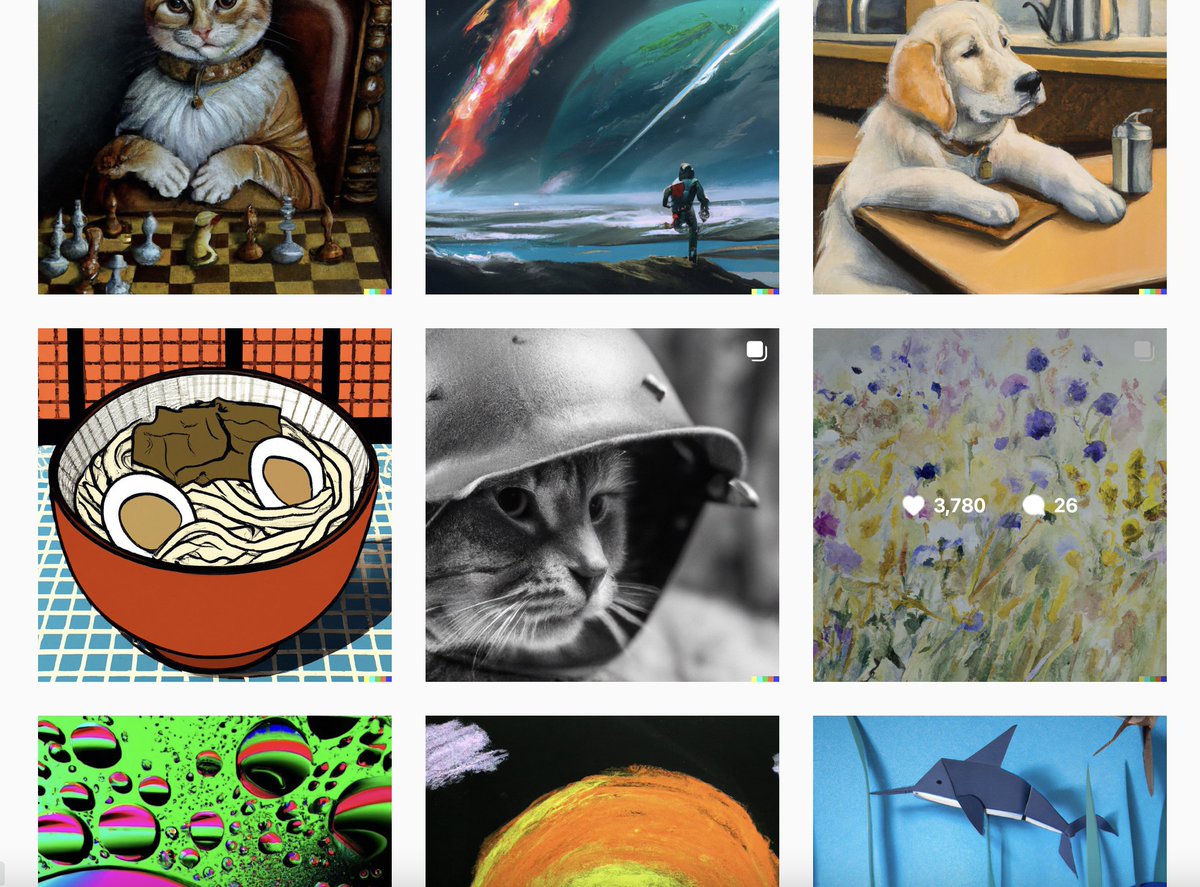
🧵Automated image generation with DALL-E
1. A few days ago @OpenAI announced that #DALLE users could create images programmatically via API.
To celebrate we took a vintage shot of @eerac, circa 2012, and through in a healthy assortment of fully automated AI whimsey.



1. A few days ago @OpenAI announced that #DALLE users could create images programmatically via API.
To celebrate we took a vintage shot of @eerac, circa 2012, and through in a healthy assortment of fully automated AI whimsey.




2. Until two days ago, DALL-E users have only ever been able to generate images through @OpenAI's website, labs.openai.com
DALL-E delivers great image quality, but without being able to use it programmatically, it's cumbersome to incorporate in to automated workflows.
DALL-E delivers great image quality, but without being able to use it programmatically, it's cumbersome to incorporate in to automated workflows.
3. In August, @StabilityAI's open release of #stablediffusion led to an explosion in 3rd party tools built on text-to-image AI.
While @OpenAI hasn't released their network, they have introduced a way to incorporate DALL-E in to workflows and plugins.
While @OpenAI hasn't released their network, they have introduced a way to incorporate DALL-E in to workflows and plugins.
https://twitter.com/miramurati/status/1588218986407133185
4. We love #stablediffusion, but there's no denying the appeal of #DALLE's ease-of-use and improved visual fidelity on many prompts.
Right out of the box, DALL-E produced "A cartoon cat on roller skates from a 1987 Saturday morning cartoon" purr-fect for TV.
SD's cat? Misssss

Right out of the box, DALL-E produced "A cartoon cat on roller skates from a 1987 Saturday morning cartoon" purr-fect for TV.
SD's cat? Misssss


5. To take full advantage DALL-E's new API, we combined GPT-3 generated image prompts with face detection + outpainting.
To do this, we set up a REPL on @Replit to take load a photo, crop out the face, and then call DALL-E using one or autogenerated prompts.



To do this, we set up a REPL on @Replit to take load a photo, crop out the face, and then call DALL-E using one or autogenerated prompts.




6. If you'd like to try the REPL yourself, have at it!
To use it, go to @Replit👇, clone the REPL, enter your @OpenAI API key in to the REPL's secrets tab, then click "run".
(Each 1024 x 1024 image costs ~$0.02, so releasing free demos gets pricy fast).
replit.com/@eerac/FaceOut…
To use it, go to @Replit👇, clone the REPL, enter your @OpenAI API key in to the REPL's secrets tab, then click "run".
(Each 1024 x 1024 image costs ~$0.02, so releasing free demos gets pricy fast).
replit.com/@eerac/FaceOut…
7. If you're fed up with our airy hijinks and on the lookout for practical tools, check out @NicolayMausz's new #DALLE photoshop plugin (which also works with #stablediffusion).
We expect to see more integrations like this in the near future.
We expect to see more integrations like this in the near future.
https://twitter.com/NicolayMausz/status/1588376946869932032
8. Also, if you're thinking of making your own tools, consider following @yoheinakajima for inspiration.
https://mobile.twitter.com/yoheinakajima/status/1588505443818930176
9. We're pumped @OpenAI continues to extend #DALLE.
There are a few features we'd love to see added to the API to keep up with #stablediffusion.
First, it'd be great if image masks could have partial opacity, as with Dreamstudio's inpainting interface.
There are a few features we'd love to see added to the API to keep up with #stablediffusion.
First, it'd be great if image masks could have partial opacity, as with Dreamstudio's inpainting interface.
https://twitter.com/aifunhouse/status/1585812083811135488
10. Second, under the hood DALL-E is capable of impressive text-guided interpolation, but this feature isn't exposed.
Why not make it available through the API?
Why not make it available through the API?
https://twitter.com/model_mechanic/status/1515849481635336193
11. And so concludes our thread on the new DALL-E API. Stay tuned for future updates and demos.
Since you've made it this far, why not follow @aifunhouse for more tutorials, explorations, and #AI fun.
If you enjoyed this thread, please like and share.👇
Since you've made it this far, why not follow @aifunhouse for more tutorials, explorations, and #AI fun.
If you enjoyed this thread, please like and share.👇
https://twitter.com/aifunhouse/status/1589280380682928128
• • •
Missing some Tweet in this thread? You can try to
force a refresh
















